The is an arrangement of pulleys as shown in figure. All the pulley are massless and frcitionless and the strings used are inextensible. Each of these springs have a spring constant k. We define the stiffness of the assembly k1 as the force required to be applied at point A for its unit displacement.
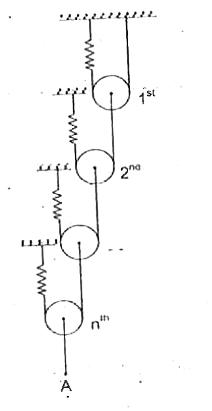
What will he the most probable value of k1 for n =3
64k/21
32k/21
16k/21
8k/21
The correct Answer is:A
Similar Questions
The is an arrangement of pulleys as shown in figure. All the pulley are massless and frcitionless and the strings used are inextensible. Each of these springs have a spring constant k. We define the stiffness of the assembly k1 as the force required to be applied at point A for its unit displacement.
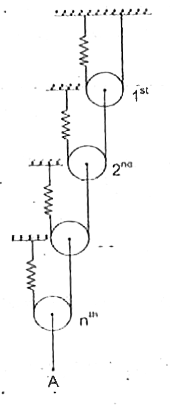
Find k1 for n = 1
View SolutionThe is an arrangement of pulleys as shown in figure. All the pulley are massless and frcitionless and the strings used are inextensible. Each of these springs have a spring constant k. We define the stiffness of the assembly k1 as the force required to be applied at point A for its unit displacement.
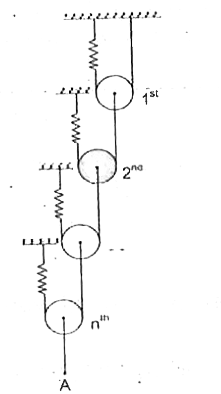
Find k1 for n=2
View Solution
Knowledge Check
The is an arrangement of pulleys as shown in figure. All the pulley are massless and frcitionless and the strings used are inextensible. Each of these springs have a spring constant k. We define the stiffness of the assembly k1 as the force required to be applied at point A for its unit displacement.

Find k1 for n = 1AkBk/2C2kD4kThe is an arrangement of pulleys as shown in figure. All the pulley are massless and frcitionless and the strings used are inextensible. Each of these springs have a spring constant k. We define the stiffness of the assembly k1 as the force required to be applied at point A for its unit displacement.

Find k1 for n=2A2kB16k/5C5kD18k/5An arrangement of spring , strings, pulley and masses is shown in the figure . the pulley and the String are massless and M>m . the spring is light with spring constant k. If the string Connecting m to the ground detached , then immediately after detachment
 Athe magnitude of te acceleration of is zero and of M isBthe magnitude of the acceleration of m is (M−m)g/m and that of M is zeroCthe accelerations of both masses are sameDthe elongation in the spring is (M−m)g/k
Athe magnitude of te acceleration of is zero and of M isBthe magnitude of the acceleration of m is (M−m)g/m and that of M is zeroCthe accelerations of both masses are sameDthe elongation in the spring is (M−m)g/k
The pulley shown in figure has a moment of inertias I about its xis and mss m. find the tikme period of vertical oscillastion of its centre of mass. The spring has spring constant k and the string does not slip over the pulley.
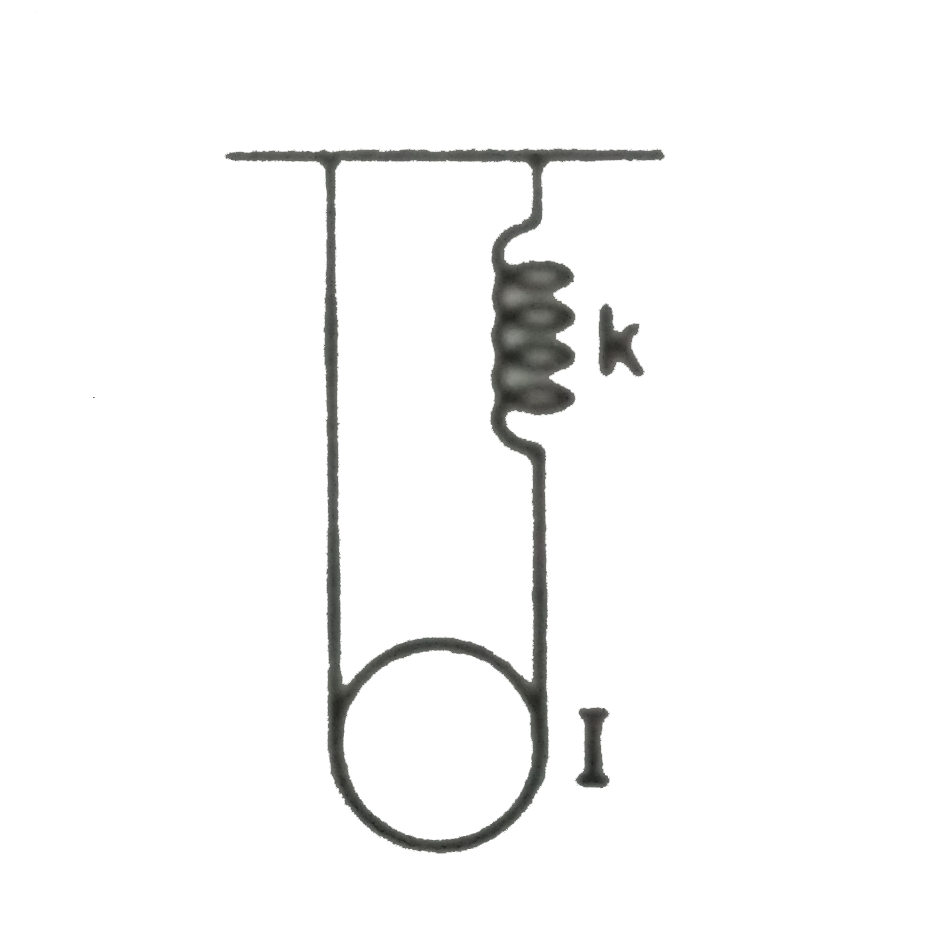
View SolutionIn the arrangement shown in figure, pulley is smooth and massless and all the strings are light. Let F1 be the force exerted on the pulley in case (i) and F2 the force in case (ii). Then :
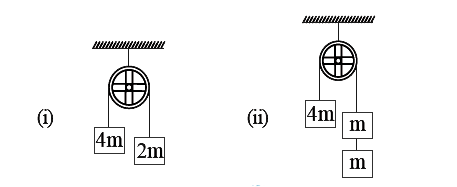
View SolutionIn the arrangement shown in figure, pulley is smooth and massless and all the strings are light. Let F1 be the force exerted on the pulley in case (i) and F2 the force in case (ii). Then :

View SolutionThe pulley shown in figure has a moment of inertias I about its xis and mss m. find the tikme period of vertical oscillastion of its centre of mass. The spring has spring constant k and the string does not slip over the pulley.

View SolutionThe pulley shown in figure has a moment of inertias I about its axis and mass m. find the time period of vertical oscillation of its centre of mass. The spring has spring constant k and the string does not slip over the pulley.

View Solution
